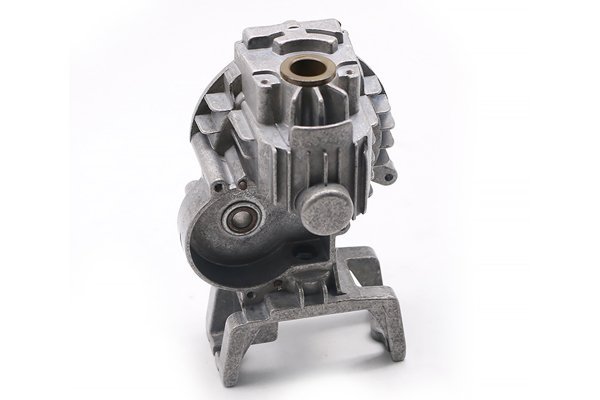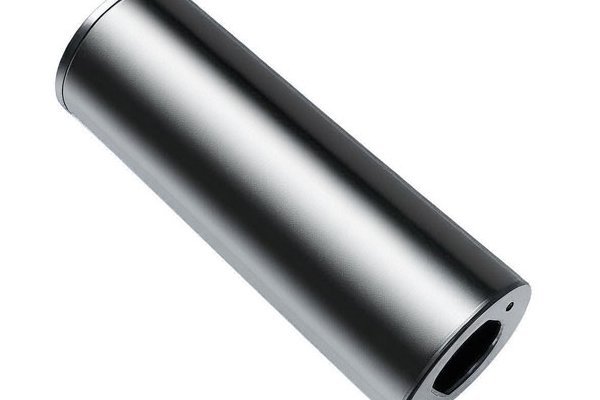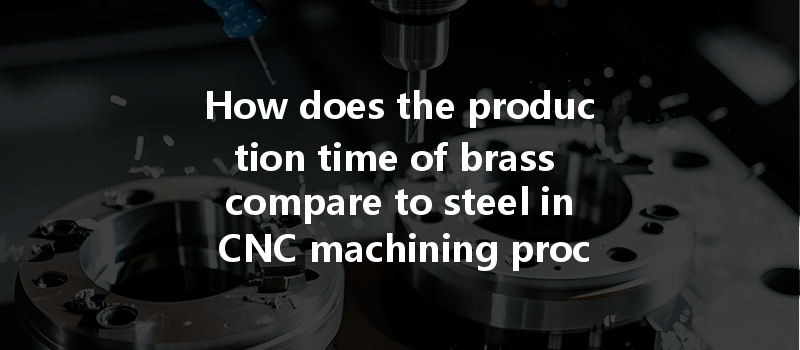Did you know that the global market for CNC machining is projected to reach nearly $100 billion by 2025? As the demand for precision parts continues to rise, understanding the nuances of different materials used in CNC machining has become more critical than ever. One pivotal factor that affects production time, costs, and overall efficiency is the choice of material. In this blog post, we will delve into the differences in production times when machining brass versus steel, and why this distinction is paramount for manufacturers seeking to optimize their processes.
CNC (Computer Numerical Control) machining is a sophisticated method that utilizes computer software to control machine tools, ensuring precise manufacturing of complex components. The selection of material plays a crucial role in tooling, production time, and overall quality of the finished product. 
When considering CNC machining, two commonly used materials are brass and steel. Each of them has unique properties, benefits, and challenges that can dramatically influence production time.
2.1 Properties of Brass
Brass, an alloy of copper and zinc, is known for its malleability, corrosion resistance, and good thermal conductivity. It is frequently utilized in applications where electrical conductivity is essential, such as connectors, switches, and springs.
2.2 Advantages of Using Brass
2.3 Challenges of Brass Machining
Despite its advantages, brass machining poses some challenges. The chip formation can create issues, particularly when dealing with thin-walled components. Additionally, the need to manage scrap metal effectively can heighten the importance of efficiency in machining operations.
3.1 Properties of Steel
Steel, known for its high strength and durability, comes in various grades, such as carbon and alloy steel. Each grade offers different mechanical properties, influencing the choice for machining specific applications.
3.2 Advantages of Using Steel
3.3 Challenges of Steel Machining
Machining steel typically involves longer production times due to its hardness. High-speed machining setups and specialized cutting tools are often required to manage friction and heat, which can lead to increased costs.
4.1 Analyzing Production Processes
When comparing the production times of CNC machining brass versus steel, we need to consider several factors, including cutting speed, feed rate, tool life, and cycle time.
4.2 Example Case Studies
To comprehend the differences in production time better, let’s look at two hypothetical projects: one focused on brass components and the other on steel components.
Case Study 1: Brass Machined Parts

Case Study 2: Steel Machined Parts
These illustrative examples highlight how material choice directly impacts production time.
5.1 Tooling Strategies
Employing the right tooling strategies is crucial in reducing production times. For brass, using materials such as carbide tools with optimized geometries allows for higher cutting speeds. In contrast, for steel, selecting high-speed steel or coated tools can help manage tool wear effectively.
5.2 Machine Parameters
Tuning machine parameters to suit the material’s properties can drastically alter production times. Parameters like spindle speed, feed rate, and depth of cut should be iteratively tested to find the optimal setting for both brass and steel machining.
5.3 Process Automation
Incorporating automation into the manufacturing process can significantly reduce production times. Automated tool changers, pallet systems, and CNC machines with capabilities to handle multiple setups will streamline operations.
5.4 Employee Training
Investing in employee training focuses on understanding material properties, tool usage, and machine operation, leading to better production efficiency.
6.1 Brass Applications
Brass is predominantly used in industries associated with plumbing, electrical, and musical instruments. Its quick machining capabilities make it ideal for producing components that demand intricate designs within a short timeframe.
6.2 Steel Applications
Steel’s strength and versatility make it indispensable in construction, automotive, and aerospace industries. Parts often manufactured in these sectors, such as gears and frames, may have stricter tolerances, thus requiring more extended machining times.
As operations evolve, the demand continues to favor materials prompting technological advances. Innovations in tooling and machining processes will play an essential role in how brass and steel are adopted in manufacturing.
In conclusion, the production time differences between brass and steel in CNC machining can be significant, affecting everything from operational costs to component quality. Brass offers a clear advantage in speed and ease of machining due to its favorable properties, while steel’s high strength is often offset by longer production times.
Manufacturers must weigh these factors when selecting materials for production, focusing on optimizing machining techniques and processes. As the CNC machining landscape continues to evolve, understanding these distinctions will ensure businesses remain competitive.
This blog is a valuable resource for engineers, manufacturers, and decision-makers involved in the CNC machining industry. By grasping the core techniques and insights outlined here, you can enhance operational efficiency and improve the quality of your products. Remember, informed material selection is key to success in today’s fast-paced manufacturing environment.




